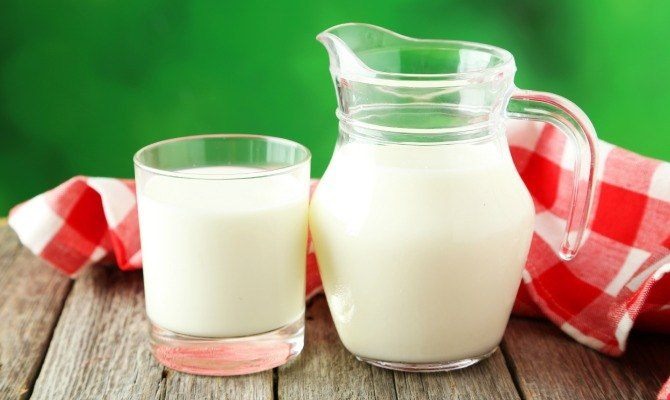The Last Word On Milk
Recently, two U.S. congressmen introduced a bill that aims to put more milk in schools. The School Milk Nutrition Act of 2015 specifically seeks to ensure that schools offer at least three options of milk to students. Under current law, students are already guaranteed two choices of milk at school. The new bill aims to give them a third: low-fat flavored milk.
The legislation, at least on its surface, focuses on health objectives for children across the country. Milk is a valuable source of protein, calcium and vitamin D — or so it is advertised. Yet today, many adults are seeing health benefits from cutting milk or other dairy products out of their diets, leaving us to wonder if milk really is good for us. Parents who have sworn off milk themselves may wonder: Do my growing children still need milk?
The simple answer is "no." Having worked in wellness for more than 20 years, I've seen the rise and fall of milk. Sales of milk have recently fallen to their lowest level in nearly 30 years, and the reason is simple: Milk has very few, if any, stand-alone health benefits that can't be found in other foods. Moreover, many of its properties could be damaging to our bodies in the long term.
[pullquote:left]In a long-running, comprehensive study following more than 100,000 people that was released by the University of Sweden last fall and published in the British Medical Journal, researchers found that women who drank at least three glasses of milk a day were nearly twice as likely to die over the next 20 years compared with women who drank less than one glass a day. The study's authors suggested that galactose, a simple sugar found in milk, could cause low-grade inflammation.
Inflammation happens when we eat too much of certain foods, like white sugar or white bread, that are difficult for our bodies to break down. The more processed foods we eat, the more we experience inflammation, which can alter our hormones and our appetites and eventually lead to disease.
As for allowing children to drink more milk, the new bill would require schools to add low-fat flavored milk to their cafeteria menus. Flavored milk, like chocolate milk, usually comes with added sugar and other additives that may make it more difficult for the body to absorb milk's other nutrients. Some chocolate or flavored milks pack double the calories of regular milk and 20 percent more sugar than a soda.
Of course, as with any nutritional recommendation, there is room for moderation. In small quantities, milk may not be a bad thing. That said, it should not be considered an essential component of the average American diet, because there are so many other ways to achieve the health benefits milk offers.
Calcium can be found in plentiful quantities in broccoli, spinach, kale, and many other green vegetables. As a nutritionist, I encourage all my patients to eat a balanced diet with four to six servings of vegetables a day, which should guarantee more than the daily recommended dose of calcium. Vitamin D is found in fortified orange juice and cereals, egg yolks, and fatty fish (like salmon), while lean meats, nuts, and some grains offer great healthy sources of protein.
If you still love cooking with milk but want to scale back on your intake, there is some good news about alternatives. Almond, rice, and soy milk tend to offer their own balance of proteins, carbohydrates, and nutrients (including vitamin D) that can be good for your body. But, as with dairy-based milk, it's important to be wary of any beverage with lots of added sugar.
Lisa Gorman, RN, is the director of the St. Joseph Health Wellness Corner in Irvine. Lisa has worked in wellness and prevention for more than 10 years, and is currently a registered nurse with 25 years of health care experience.
